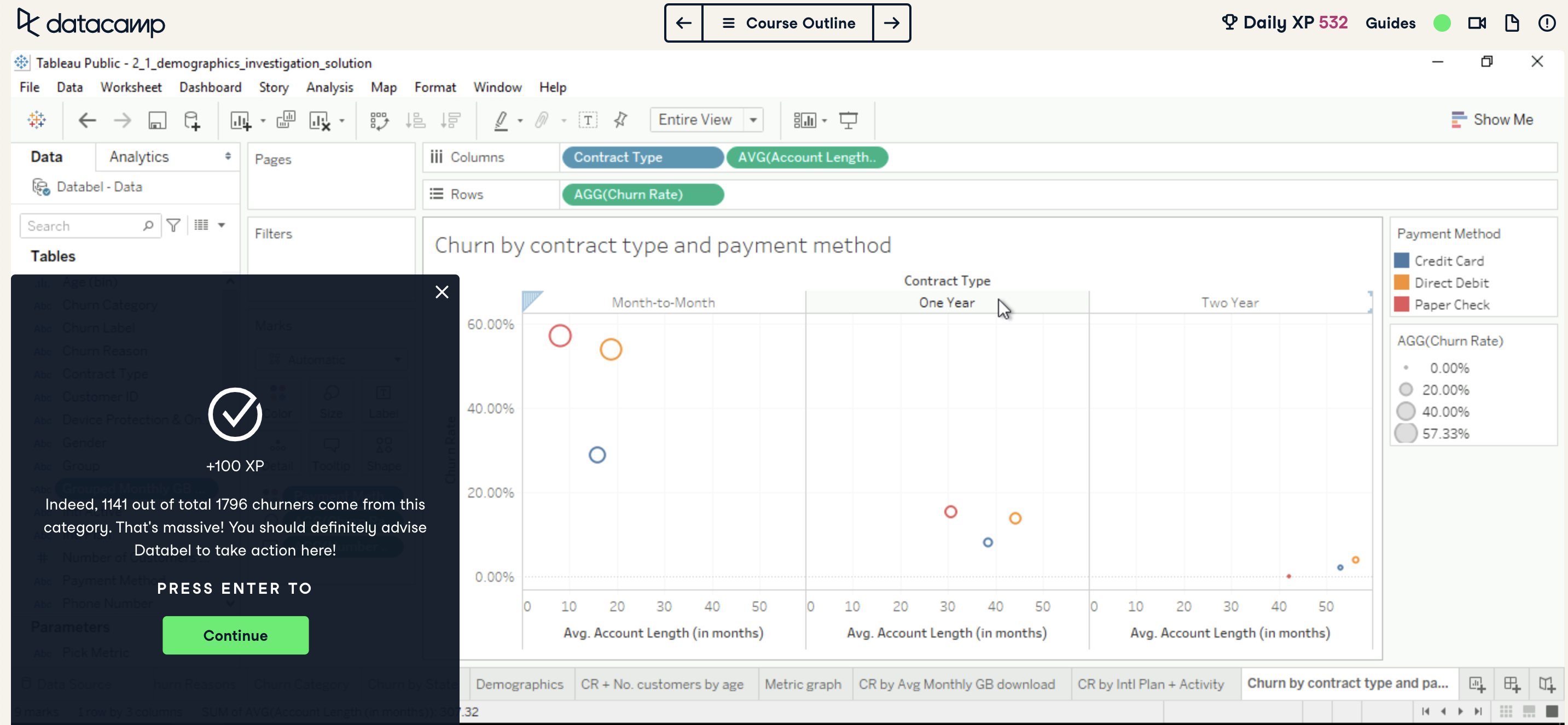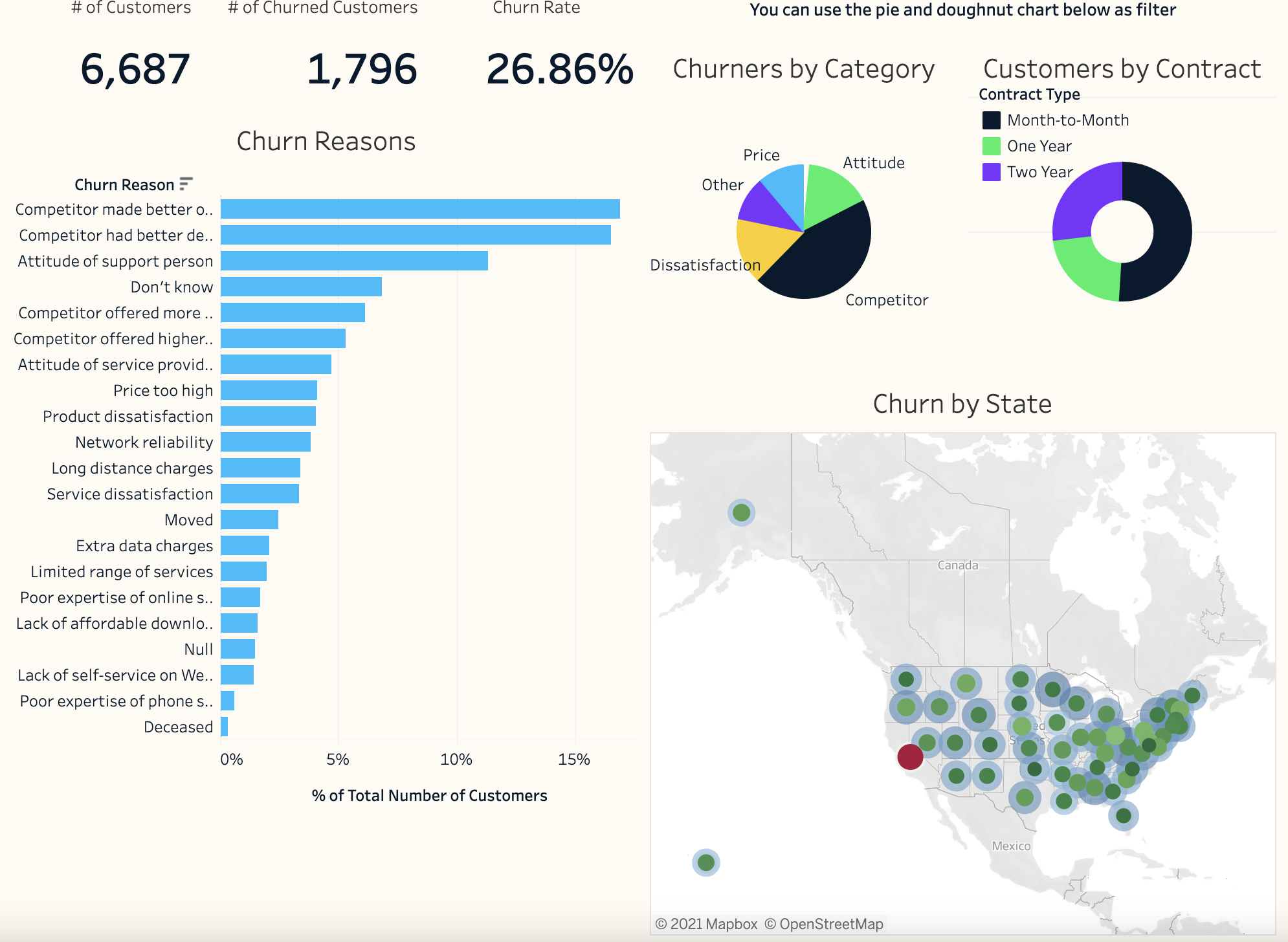New Tableau Case Study: How to Analyze Customer Churn
Are you feeling ready to apply your Tableau skills? Find out how in our new course, Analyzing Customer Churn in Tableau, you’ll grow business-critical data analysis and visualization skills to increase a telecom company’s customer retention, as well as ad
Nov 2021 · 5 min read
Topics
RelatedSee MoreSee More
The Environmental Impact of Digital Technologies and Data
Our increasingly digital lives come with a cost. This article analyzes the implications of digital technology and data for the environment.
Javier Canales Luna
19 min
Excitement for DataCamp’s Radar 2023 Event Intensifies
Find out more details about this year’s Radar event, including what’s on the agenda, who’s speaking, and what you can expect during the event.
Matt Crabtree
3 min
Year In Data 2023: Celebrating Your Data Journey
Year In Data 2023 is a new experience for DataCamp users that honors your dedication throughout a year of learning. Join us in celebrating and sharing your achievements with the world.
Luigi D'Introno
3 min
Top 32 AWS Interview Questions and Answers For 2024
A complete guide to exploring the basic, intermediate, and advanced AWS interview questions, along with questions based on real-world situations. It covers all the areas, ensuring a well-rounded preparation strategy.
Zoumana Keita
15 min
Avoiding Burnout for Data Professionals with Jen Fisher, Human Sustainability Leader at Deloitte
Jen and Adel cover Jen’s own personal experience with burnout, the role of a Chief Wellbeing Officer, the impact of work on our overall well-being, the patterns that lead to burnout, the future of human sustainability in the workplace and much more.
Adel Nehme
44 min
Becoming Remarkable with Guy Kawasaki, Author and Chief Evangelist at Canva
Richie and Guy explore the concept of being remarkable, growth, grit and grace, the importance of experiential learning, imposter syndrome, finding your passion, how to network and find remarkable people, measuring success through benevolent impact and much more.
Richie Cotton
55 min


